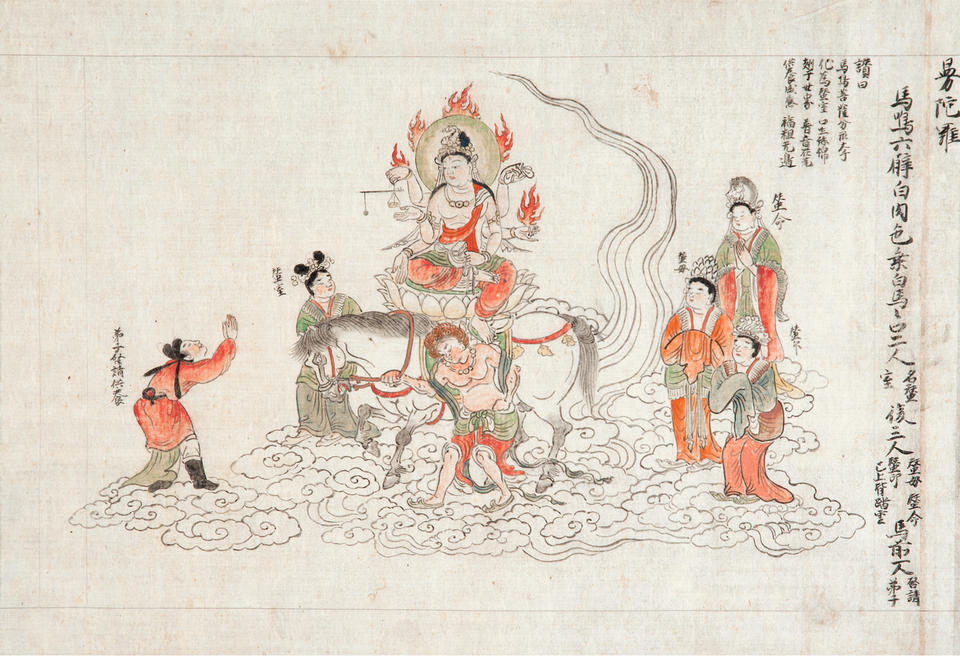Catalogue information
Kamakura period, 13th century
Handscroll fragment, mounted as hanging scroll; ink and light color on paper
33.3 x 48 cm (13 1/8 x 18 7/8 in.)
See also
This artwork was published as catalogue entry 10 in Volume I of Art through a Lifetime.
Additional details
Text
Mandala / Memyō Bosatsu, with six arms and in pale flesh color, rides on a white horse. Near the horse’s mouth are two figures: one of them named Sanshitsu. At the back are three figures: Sanbo, Sanmyō, and San’in, all stepping on clouds. In front of the horse is a worshipping disciple. / Eulogy: Memyō Bosatsu, incarnating himself in the cosmos, / turns into a silkworm that spits out silk flosses. / Flying around the world, it is heralded by a suffusion of music, / responsive to people’s offerings, it brings them boundless good fortune.
[Figures, from right to left]: Sanmyō, San’in, Sanbo, Sanshitsu; Worshipping disciple making an offering
Supplementary Transcriptions
Text
曼陀羅
馬鳴六臂白肉色﹐乘白馬﹐馬口二人﹐名蠶室﹐後三人蠶毋﹑蠶命﹑蠶印﹐已上皆踏雲。馬前一人啟請弟子。
讚曰
馬鳴菩薩﹐分形大千。
化為蠶室[蟲]﹐口吐絲綿。1
翅于世界﹐普音在先。
供養感應﹐福粗[祚]无邊。2
蠶命﹑蠶印﹑蠶毋﹑蠶室﹑弟子啟請供養。
Notes
1. Instead of 蠶室, the term in the original eulogy is 蠶蟲, meaning “silkworm.” See the next footnote.
2. This eulogy is recorded in日本淳祐,《要尊道場觀》, in the Taishō Canon (大正藏), no.2468,續諸宗部九, vol. 78. CBETA Chinese Electronic Tripitaka, http://jinglu.cbeta.org/cgi-bin/jl_detail.pl?lang=&sid=kqrsp, no digital text.

